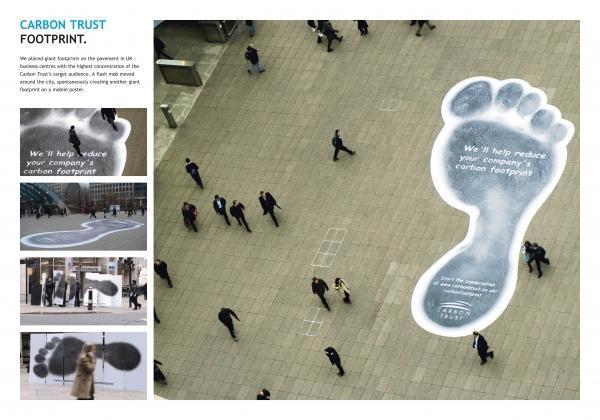541
How to measure your carbon footprint
Carbon footprint (Carbon Footprint) is the aggregate emissions of all greenhouse gases directly or indirectly produced through daily activities. These greenhouse gases, usually measured in metric tons of carbon dioxide, or CO2. Carbon footprint can be measured for an individual, household, company or other groups of people, state or nation. It is a small but vital part of our large, comprehensive ecological footprint. 
According to some experts, there are two types of carbon footprint: primary footprint and secondary footprint.
The primary footprint refers to our direct activities directly related to the burning of fossil fuels, or immediately affect the natural resources of the planet, such as driving a car, flying in a plane, heating our homes, the connection of electronic devices, or the use of water.
Secondary activities that affect the carbon footprint basically relates to products that we buy, for example, food and clothing or other goods for our home.
Even if you do not divide your activities into primary and secondary categories, they are all important and they all affect the environment. To determine your carbon footprint, there are free calculators online.
The estimated annual carbon footprint of the urban dweller, without taking into account the flow of hot water to wash, use public transportation, eating and other little things, you can roughly estimate 4 tons of CO2 per occupant of the apartment. Add to that 10 tons, if you're a motorist, and another 4.5 tons, if you fly by plane. Total carbon footprint is 18.5 tons of CO2 per year.

Here are some basic conversion factors:
1) power: 630 гСО2/kWh.
2) to heat the apartment with hot water you can use a multiplier 260 kgco2/Gcal (if for water heating using a modern boiler room on natural gas with an efficiency of 90%);
3) personal vehicles: for diesel fuel is 2.7 kgco2/l; for gasoline can take 2 kgco2/l;
4) using a mobile phone — 1250 kg CO2-EQ. per year, if say, 1 hour per day;
5) when flying on a plane (Boeing 747) per passenger 1 km of drains 106,5 kg of CO2.
In General, there are some important steps you can take to reduce your carbon footprint:
Source: rodovid.me/saharin/kak-izmerit-svoy-uglerodnyy-sled.html

According to some experts, there are two types of carbon footprint: primary footprint and secondary footprint.
The primary footprint refers to our direct activities directly related to the burning of fossil fuels, or immediately affect the natural resources of the planet, such as driving a car, flying in a plane, heating our homes, the connection of electronic devices, or the use of water.
Secondary activities that affect the carbon footprint basically relates to products that we buy, for example, food and clothing or other goods for our home.
Even if you do not divide your activities into primary and secondary categories, they are all important and they all affect the environment. To determine your carbon footprint, there are free calculators online.
The estimated annual carbon footprint of the urban dweller, without taking into account the flow of hot water to wash, use public transportation, eating and other little things, you can roughly estimate 4 tons of CO2 per occupant of the apartment. Add to that 10 tons, if you're a motorist, and another 4.5 tons, if you fly by plane. Total carbon footprint is 18.5 tons of CO2 per year.

Here are some basic conversion factors:
1) power: 630 гСО2/kWh.
2) to heat the apartment with hot water you can use a multiplier 260 kgco2/Gcal (if for water heating using a modern boiler room on natural gas with an efficiency of 90%);
3) personal vehicles: for diesel fuel is 2.7 kgco2/l; for gasoline can take 2 kgco2/l;
4) using a mobile phone — 1250 kg CO2-EQ. per year, if say, 1 hour per day;
5) when flying on a plane (Boeing 747) per passenger 1 km of drains 106,5 kg of CO2.
In General, there are some important steps you can take to reduce your carbon footprint:
- To reduce emissions from your car, try to ride a bike or walk when possible.
- Use public transport.
- Switch off lights when not in use and switch to renewable sources such as wind or solar energy that can be an important change.
- Turn off the high temperature in your house and don't leave electronics plugged in to charge.
- Buy items locally produced items, use reusable bags and recycling, it is also important steps.
Source: rodovid.me/saharin/kak-izmerit-svoy-uglerodnyy-sled.html
The shape and color of vegetables and fruits padsasenny humanity nature
Robert S. Mendelsohn: confessions of a heretic of medicine























